#pyarelal
Explore tagged Tumblr posts
Text
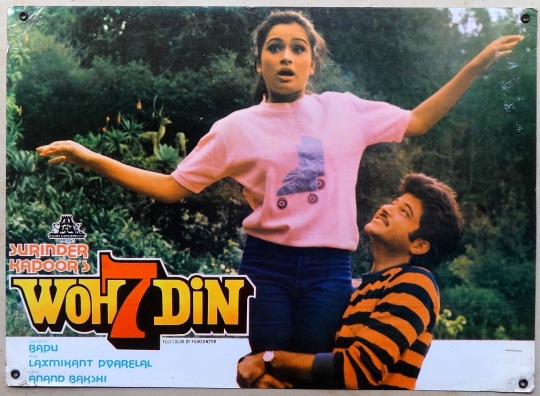
40 Years of #Woh7Din (23/06/1983).
Woh 7 Din is directed by Bapu. It stars #AnilKapoor along with #PadminiKolhapure, #NaseeruddinShah, #Asrani and Master Raju. Songs by #LaxmikantPyarelal & #AnandBakshi.
#bollywoodirect#bollywood#woh 7 din#anil kapoor#padmini kolhapure#asrani#master raju#bapu#pyarelal#anand bakshi
5 notes
·
View notes
Text
ओ शेरोवाली O Sheronwali Song Lyrics- Suhaag
Hello friends if you are Looking O Sheronwali song lyrics then you landed right place so don’t worry relaxed and enjoyed the Suhaag movie all songs lyrics peacefully at one place. You can find and read this lyrics easily in any smartphone and Tablet such as Samsung, Motorola, Saregama, Xiaomi, Vivo, Oppo, LG, Huawei, Asus, Lava, Micromax, iTel, Nokia, Oneplus, iphone, HTC and other devices. The…
View On WordPress
#Amitabh Bachchan#Amzad Khan#Anand Bakshi#Kader Khan#Komila Virk#Laxmikant#Nirupa Roy#O Sheronwali#O Sheronwali Lyrics#O Sheronwali Song#O Sheronwali Song Lyrics#Parveen Babi#Pyarelal#Rekha#Saregama#Shashi Kapoor#Suhaag
0 notes
Photo
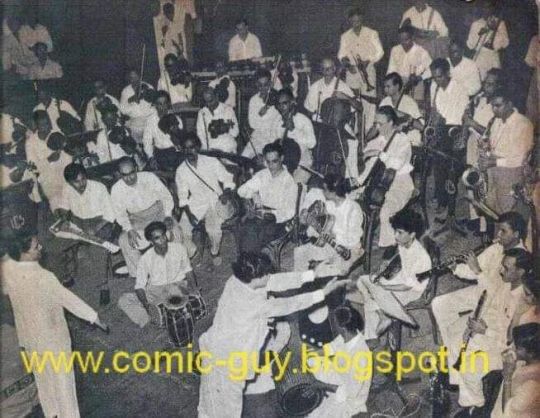
💞 Young #Laxmikant with mandolin is seen in front of #Jaikishanji. #shankar is seen at the back side. Only #lakshmikant played under the baton of #shankarjaikishan and not #pyarelal never was a part if orchestra of #shankarjaikishanduo https://www.instagram.com/p/CplHbwByn0d/?igshid=NGJjMDIxMWI=
0 notes
Text
268: Laxmikant-Pyarelal // Dosti
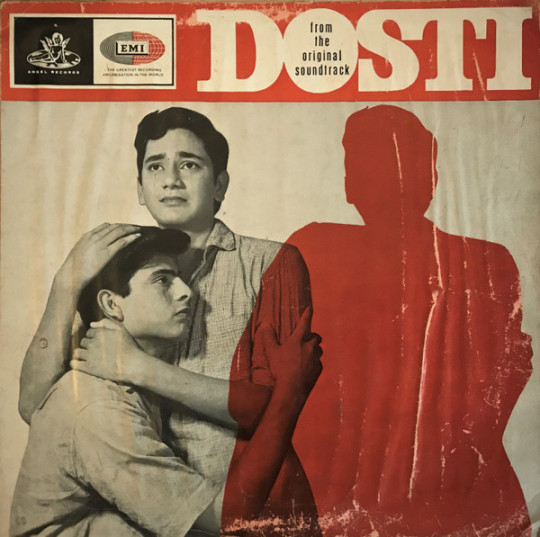
Dosti Laxmikant-Pyarelal 1964, Angel
Composing partners Laxmikant Shantaram Kudalkar and Pyarelal Ramprasad Sharma worked together for 35 years and, per Hindustan Times,composed about 2,900 songs for 750 different films during that span—a level of productivity basically unfathomable outside of the specific context of the insanely prolific Bollywood studio system. 1966’s Dosti soundtrack was their artistic and commercial breakthrough, and as such it occupies a significant place in Indian music history. I’ve never seen the film, though its cover features two crying boys hugging so it may be up my alley. The Wikipedia synopsis makes it sound like a melodrama without parallel (aside from several hundred others made by Bollywood that same year). The movie opens with a boy’s father dying in an industrial catastrophe, his mother fainting and falling down the stairs (to her death), and then the boy getting disabled in an accident of his own. He then makes friends with a homeless blind boy, and the two chums are then rigorously wedgied by life itself for the next three hours until a happy ending imposes itself.
youtube
Working with lyricist Majrooh Sultanpuri (a notable leftist poet), Laxmikant-Pyarelal’s songs are strongly credited with Dosti’s enduring success, and while I’m neither an expert in their oeuvre nor Bollywood music as a whole, I can tell you this is beautiful music any fan of adventurous vintage pop should adore. The songs all strike my ear as happy, but with a tear welling in their eyes. It’s more subtle stuff than I associate with contemporary Bollywood: “Gudiya Kab Tak Na Hasogy” twinkles and minces to a gentle dance rhythm, leaving room for soulful flute and harmonium (or accordion?) solos and the melancholy lilt of a mandolin. Both members of the duo had a strong education in Western and Indian classical music, and these sentimental songs find the sweet spot between the traditions, with vigorous tabla rhythms and droning strings meeting melodies that evoke spaghetti western scores (“Janewalo Zara”) or practically quote “Ode to Joy” (“Rahi Manwa”).
It was the convention at the time for a reliable cadre of vocalists to dub over the singing voices of the lead actors, and Laxmikant-Pyarelal established long-standing relationships with their favourites. Dosti features two of their standbys, with Mohammed Rafi handling five of the six songs on the 10” soundtrack I own, and Lata Mangeshkar taking the other. Both absolute legends on the subcontinent, while Rafi and Mangeshkar were each well into adulthood by the time they recorded these songs they give such naively haloed performances that if you can squint (your ears?) just a little it’s easy to imagine they might have originated from the lips of children.
The scope of my expertise in this area is extremely limited, but if it’s not clear, Dosti gets my highest recommendation. If you should come across a ‘60s record with the Laxmikant-Pyarelal imprimatur at your local used shop, give it a shot.
268/365
#laxmikant-pyarelal#mohammed rafi#lata mangeshkar#majrooh sultanpuri#Laxmikant Shantaram Kudalkar#Pyarelal Ramprasad Sharma#dosti#bollywood music#'60s music#indian music#hindu music#'60s bollywood#classic bollywood#music review#vinyl record
4 notes
·
View notes
Text
'Jaane Jaan': the craft of creating a crafty relationship triangle
The arc of demure feelings onscreen has usually followed a predictable graph, more often than not, the introversive character taking the higher road of being there for their objet d’affection, much like a lurking—not stalking—woebegone cloak that’s ready to quickly step up to an inimical situation with the same alacrity that they stepped down to make way for another person in the eventual beaming…
#Avik Mukhopadhyay#Jaane Jaan review#Jaideep Ahlawat#Jane Jaan#Kareena Kapoor Khan#Laxmikant-Pyarelal#Naisha Khanna#Rahul Dev Burman#Raj Vasant#Rajesh Roshan#Sachin Dev Burman#Saurabh Sachdeva#Sujoy Ghosh#Vijay Varma
1 note
·
View note
Text
Chitthi Aayi Hai Lyrics - Naam | Pankaj Udhas
In The Memory of legendary #PankajUdhas

View On WordPress
0 notes
Text

“Try to be a rainbow in someone else’s cloud.”
Try To Be A Rainbow In Someone's Cloud To be the rainbow in someone's cloud means to cultivate loving kindness as a daily practice in your life. It means tuning in to your heart, practicing empathy and using that empathy to connect to the people around you in a meaningful way.


Being a rainbow in someone else's cloud, sometimes means just being willing to listen and acknowledge their fears, thoughts, concerns in a way that says they are valid, but remembers that they are not all there is. There is also hope and where there is hope, there is light.

This quote feels particularly relevant at the moment because there is so much negativity, sorrow and frustration around us. It’s hard to ‘see the wood for the trees’ some days and yet: have you ever noticed how, when you try to find something positive to say to help someone else it makes you feel lighter and brighter even if only for a moment or two?
Why ? Here is answer
If you need support then become a support for someone
And you'll find support for yourself automatically

Tum Besahara Ho is a hindi song from the 1977 Movie Anurodh.
Singer: Prabodh Chandra Dey (Manna Dey).
Composer: Laxmikant Pyarelal
Here is a translation in English
If you need support then become a support for someone
And you'll find support for yourself automatically
Get a drowning boat to the shore
And you'll find the shore yourself automatically
You have to live with a smile
You have to bear your own pain
No matter how long the path is
But a river still has to flow
Don't stop and keep moving even if you're alone
And you'll find a companion on the path itself
Life is the same for everyone
Someone smiles and someone cries
It's easy to live with patience
It's hard to live with tension
Destiny has given us flowers and thorns both
We'll get our fare share from that
If you need support then become a support for someone
15 notes
·
View notes
Text

Directed byManmohan Desai
Written by Kader Khan (dialogue)
K. K. Shukla (scenario)
Screenplay by Prayag Raj Sharma
Story by Jeevanprabha M. Desai
Pushpa Sharma (story idea)
Produced by Manmohan Desai
Starring Vinod Khanna, Rishi Kapoor, Amitabh Bachchan, Neetu Singh, Parveen Babi, Shabana Azmi, Nirupa Roy,Pran
CinematographyPeter Pereira
Edited by Kamlakar Karkhanis
Music by Laxmikant–Pyarelal
Anand Bakshi (lyrics)Distributed by Hirawat Jain & Co.
Release date 27 May 1977
Leena Daru wardrobe
Kamal choreographer
Playback singers Mohammed Rafi, Kishore Kumar, Lata Mangeshkar, Mahendra Kapoor, Shailendra Singh, Mukesh
Did you know
When the movie released it was a huge hit in West Indies
The film made Amitabh a superstar god in the Caribean Islands. Trinidad, Tobago, Guyana and several other countries played Amar Akbar Anthony in the theaters. The film was house full for months,where getting a ticket was impossible. It was not just Indians, but millions of non Indians who fell in love with the film and embraced "Anthony" as their new Indian hero.
6 notes
·
View notes
Text
Hats 🎩 off... for Chirag and Kavya. Indian Idol 💖 ROMANTIC Duet. "Kate Nahin Kat Te", Enjoy this super hit song from the 1987 movie "Mr INDIA"
🎤Kishore Kumar and Alisha Chinai.
✍️Javed Akhtar
🎹 🎸🎻 Laxmikant and Pyarelal 🎼
Enjoy with 🎧
Have a cozy evening.
🌼𑜞᭄with ℒℴѵℯ 🌹💞
2 notes
·
View notes
Text
jeevan path par chalte hue
जीवन पथ पर चलते हुए
ik din thak kar chalte hue
इक दिन थक कर चलते हुए
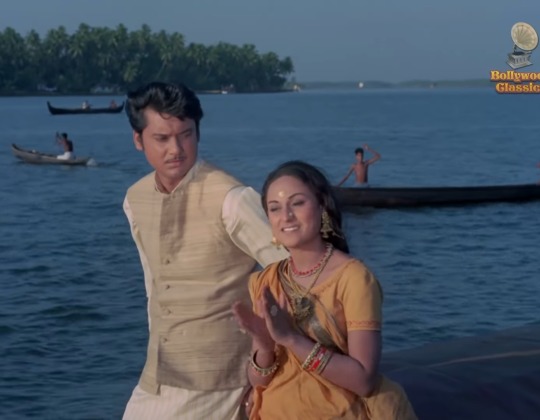

kahin na kahin to
कहीं ना कहीं तो
thaam lungaa anchal tumhara
थाम लूँगा आँचल तुम्हारा


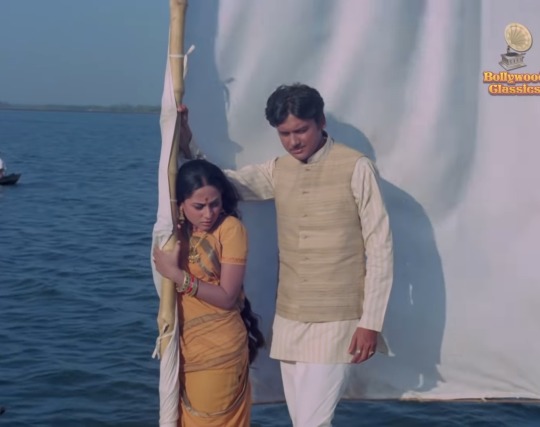
maanjhi naiya dhoonde kinara
��ांझी नैया ढूंढे किनारा
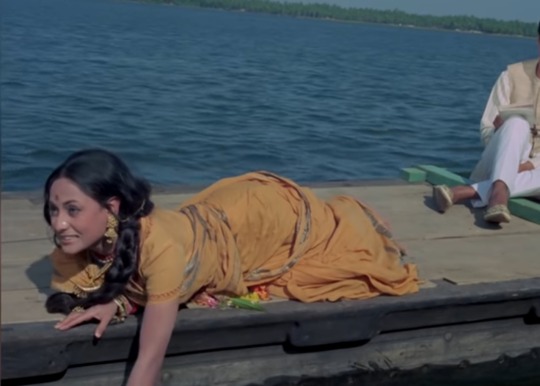
jaise sita ram mile
जैसे सीता राम मिले
jaise radha shyaam mile
जैसे राधा श्याम मिले

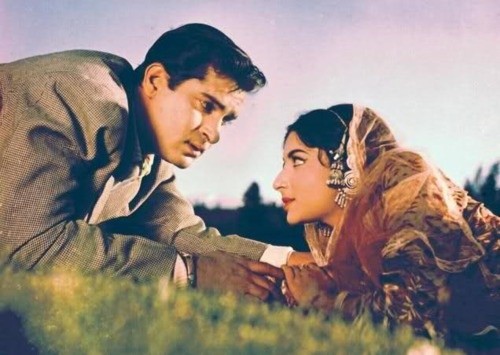
kabhi na kabhi to
कभी ना कभी तो
milan hoga tumse hamara
मिलन होगा तुमसे हमारा
maanjhi naiya dhoonde kinara
मांझी नैया ढूंढे किनारा

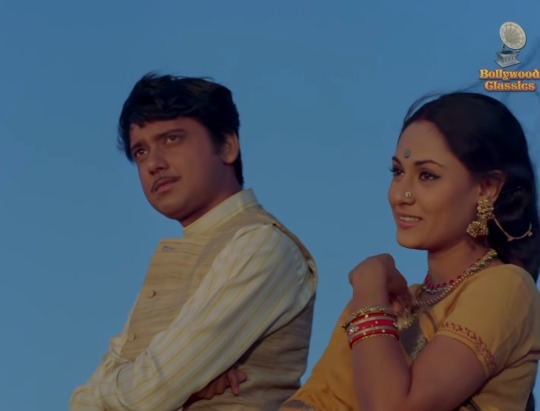
Majhi Naiya Dhoondhe Kinara,Uphaar
Mukesh | Anand Bakshi | Laxmikant-Pyarelal
#jaya bachchan#she's so pretty#shah rukh khan#varundhawan#alia bhatt#shammi kapoor#sharmila tagore#sunil dutt#meena kumari#aishwarya bachchan#swaroop dutta#old hindi songs#uphaar#desi tumblr#desiblr#bollywood#desi academia#hindi song lyrics#old bollywood#indian academia#desi dark academia#indian cinema
10 notes
·
View notes
Text
Mukesh: The Eternal Voice That Shaped Indian Music
The golden era of Indian music is defined by unforgettable voices that have left a lasting legacy, and among them, Mukesh stands as a towering figure. His deep, soulful renditions captivated millions and continue to evoke powerful emotions even decades after his passing. With a career spanning several decades, Mukesh was not just a singer but an icon who brought life to lyrics with his unparalleled voice. As Indian cinema evolved, so did its music, and Mukesh played a pivotal role in defining this transformation. Alongside other stalwarts like Anurag Kulkarni, Amrinder Gill, Rajinikanth, and Priyanka Chopra, Mukesh has a timeless relevance in India's cultural and musical heritage.
Mukesh’s Impact on Indian Music
Mukesh, often referred to as the "Voice of the Common Man," resonated with audiences from all walks of life. His songs, deeply rooted in emotion and simplicity, transcended boundaries. Classics such as "Dil Jalta Hai Toh Jalne Do" and "Jeena Yahan Marna Yahan" are etched in the hearts of listeners, evoking a blend of nostalgia and admiration. Mukesh’s ability to convey raw emotion through his voice set him apart from his contemporaries. Songs like these were more than just melodies—they were heartfelt expressions of love, despair, and hope.
His association with composers like Shankar-Jaikishan, Kalyanji-Anandji, and Laxmikant-Pyarelal produced some of the most iconic soundtracks in Indian cinema. Mukesh’s voice brought a unique depth to the characters he sang for, especially in films starring Raj Kapoor, for whom he became the playback voice of choice. His renditions in classics such as "Awara" and "Shree 420" remain benchmarks in the history of Bollywood music.
Mukesh’s influence can still be seen today, as modern singers like Anurag Kulkarni draw inspiration from his ability to balance technical perfection with raw emotion. Though separated by decades, the influence of Mukesh’s music remains deeply rooted in the foundation of Indian musical traditions.
A Connection to Modern Icons
Mukesh’s timeless appeal connects him to contemporary icons in Indian music and cinema. For instance, Amrinder Gill, a Punjabi music sensation, mirrors Mukesh’s focus on emotional storytelling in his songs. Gill’s tracks, known for their evocative lyrics and heartfelt delivery, embody a similar authenticity that Mukesh was renowned for.
Likewise, Mukesh’s contributions resonate even with superstars like Rajinikanth, whose larger-than-life presence is amplified by the music accompanying his films. While Rajinikanth himself isn’t a singer, his films often feature songs that leave a lasting impression, echoing Mukesh’s role in shaping the narratives of classic Bollywood cinema.
Mukesh’s legacy is also comparable to the multifaceted career of Priyanka Chopra, who has seamlessly transitioned between acting and music. While their artistic mediums differ, both share a commitment to pushing boundaries and creating work that transcends cultural and geographical limitations.
Mukesh’s Timeless Legacy
Mukesh’s enduring appeal lies in the universal emotions his music evokes. His ability to connect with audiences through his soulful renditions of themes like love, heartbreak, and hope has ensured that his music remains relevant. Even today, songs like "Kabhi Kabhi Mere Dil Mein" and "Suhana Safar Aur Yeh Mausam Haseen" are cherished for their lyrical beauty and emotional depth.
Mukesh also set the stage for future generations of musicians. His straightforward approach to singing, characterized by an emphasis on natural expression over vocal gymnastics, has inspired countless artists. The likes of Anurag Kulkarni and Amrinder Gill embody the principles Mukesh stood for, ensuring that his influence remains undiminished.
Mukesh in the Digital Era
The advent of streaming platforms has introduced Mukesh’s work to new generations of listeners worldwide. His songs are frequently featured in curated playlists celebrating classic Bollywood, standing alongside contemporary hits by artists like Anurag Kulkarni and Amrinder Gill. This digital revival ensures that Mukesh’s voice continues to inspire and enchant music lovers across the globe.
Conclusion
Mukesh’s contribution to Indian music remains unparalleled. His ability to evoke profound emotions through simple, heartfelt melodies has made him a legend whose influence transcends generations. From inspiring contemporary icons like Anurag Kulkarni and Amrinder Gill to connecting with global talents like Priyanka Chopra, Mukesh’s legacy is an enduring testament to the power of music.
0 notes
Text

31 Years of Khalnayak (15/06/1993).
Khal Nayak is directed by Subhash Ghai. The story centers on the escape and attempted capture of terrorist criminal Ballu (Sanjay Dutt) by Inspector Ram (Jackie Shroff) and Ganga (Madhuri Dixit). Songs by Laxmikant Pyarelal & Anand Bakshi.
#khalnayak (1993)#subhash ghai#sanjay dutt#jackie shroff#madhuri dixit#anand bakshi#laxmikant pyarelal
7 notes
·
View notes
Text
तुने मुझे बुलाया शेरावालिये Tune Mujhe Bulaya Sherawaliye Song Lyrics- Aasha 1980
Hello friends if you are Looking Tune Mujhe Bulaya Sherawaliye song lyrics then you landed right place so don’t worry relaxed and enjoyed the Aasha movie all songs lyrics peacefully at one place. You can find and read this lyrics easily in any smartphone and Tablet such as Samsung, Motorola, Goldmines Gaane, Xiaomi, Vivo, Oppo, LG, Huawei, Asus, Lava, Micromax, iTel, Nokia, Oneplus, iphone, HTC…
View On WordPress
#Aasha#Goldmines Gaane#Jeetendra#Laxmikant#Narendra Chanchal#Pyarelal#Rameshwari#Reena Roy#Tune Mujhe Bulaya Sherawaliye#Tune Mujhe Bulaya Sherawaliye Lyrics#Tune Mujhe Bulaya Sherawaliye Song#Tune Mujhe Bulaya Sherawaliye Song Lyrics#y Mohammed Rafi
0 notes
Text
Price: [price_with_discount] (as of [price_update_date] - Details) [ad_1] Do you know what Lata Mangeshkar’s original name was? Were you aware of why Lata left school after the very first day? Did you know which was Lata’s first song and last song? Did you know why Lata stopped working with Rafi and S D Burman for a few years? Is it true that Lata loved to gamble in casinos wearing jeans? Why did Lata say she would never want to be reborn as Lata again? Which was the only Hindi film in which Lata was seen on-screen? The Life and Music of Lata Mangeshkar: A fan’s tribute to the Melody Queen reveals the answers to all these questions and presents interesting facts about Lata Mangeshkar. This book is a tribute to the melody queen and presents her life journey. Find out how a 13-year-old was forced to sing to support her family and ended up becoming a legend. The reign of Lata Mangeshkar over the Indian film industry is unparalleled. She reigned for over 65 years and sang until the age of 90. This book presents not just the story of Lata but the story of Hindi film music. Read how Shankar-Jaikishan rose to the top and then dramatically fell. Know the rise of R D Burman and Laxmikant-Pyarelal and their career graphs. From the golden era to music to the decline of music, and then to the revival–the book covers it all. Find out about the filmmakers, musicians, singers, and family members who played a key part in her success. Read about her trials, tribulations, awards, and achievements. The book has interesting nuggets about incidents from the life of the great singer. The number of songs she sang, with which composer has she sung the most songs, how much she was paid for her songs, and many other facts are presented in this book. This book is the tribute of a fan to the greatest musical legend born in India. If you are a lover of Hindi film music, this book is a must. If you want to know about the life story of the nightingale, then read this book. ASIN : B09WDZY48F Language : English File size : 884 KB Simultaneous device usage : Unlimited Text-to-Speech : Enabled Screen Reader : Supported Enhanced typesetting : Enabled X-Ray : Not Enabled Word Wise : Enabled Print length : 207 pages [ad_2]
0 notes
Text
BSC Nursing College in Sonipat
Pyarelal College – Premier BSc Nursing College in Sonipat Pyarelal College stands out as the leading BSC Nursing College in Sonipat, offering exceptional education and state-of-the-art facilities for aspiring healthcare professionals. Located in Haryana, the college is known for its expert faculty, modern curriculum, and a strong focus on practical learning. With a commitment to shaping skilled and compassionate nurses, Pyarelal College is the ideal choice for your nursing education.
0 notes